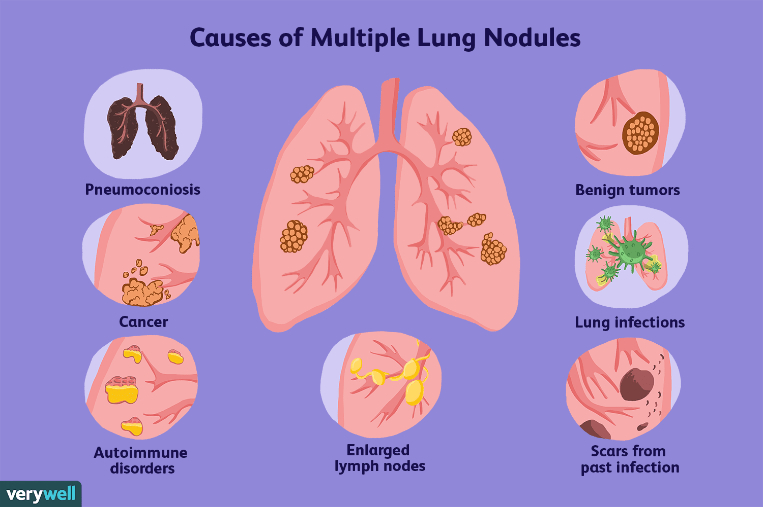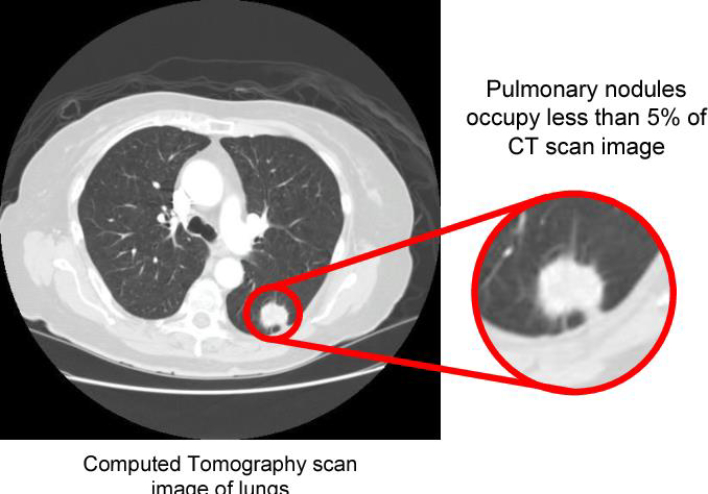Can Lung Nodules Turn To Cancer?
In this blog, we are going to dwell deep into the question: can lung nodules turn to cancer? Let us start by finding out what a lung nodule is.
A lung nodule is a small abnormal mass of cells in the lung that is quite common. They are observed as round, white shadows on a chest X-ray or computed tomography (CT) scan. Most lung nodules observed on CT scans are not diseased. They can be the consequence of an old infection, scar tissue, or other causes. But tests are often needed to be certain that a nodule is not cancerous.

Lung nodules are generally 0.2 inches (5 millimeters) to 1.2 inches (30 millimeters) in dimension. A 30-millimeter larger nodule is more prone to be cancerous than a smaller lung nodule.
If the doctor finds a lung nodule on an imaging test, it is useful to compare the current imaging scan with a previous one. If the nodule on earlier images has not changed in size, shape, or appearance in two years, it is probably noncancerous.

Noncancerous lung nodules are mostly caused by previous infections and require no treatment. In some cases, the doctor may advise annual chest imaging to see if the lung nodule grows or changes over time.
The time between scans might range anywhere from a couple of months to a year, based on how likely the doctor thinks that the nodule could be cancerous. This is reliant on the dimensions, shape, and location of the nodule, as well as whether it appears to be solid, or fluid-filled.
If the scans show that the nodule has grown, or if the nodule has other troubling features, the doctor will want to get a sample of it to check it for cancer cells. This is called a biopsy. This can be done in different ways:
- i. Bronchoscopy – The doctor will pass a long, thin tube down the throat and into the airways of the lungs to reach the nodule. A small tweezer on the end of the bronchoscope is used to get the sample of the nodule.
- ii. If the nodule is in the outer part of the lung, the doctor will pass a thin, hollow needle through the skin of the chest wall (with the help of a CT scan) and into the nodule to obtain a sample.
- iii. If there is a better chance that the nodule is cancerous or if the nodule cannot be reached with a needle or bronchoscope, surgery could be recommended to remove the nodule and some surrounding lung tissue. Sometimes larger parts of the lung could also be removed.
After the biopsy is completed, the tissue sample will be scrutinised in a laboratory by a doctor called a pathologist. The pathologist will examine the biopsy for cancer, infection, scar tissue, and other lung problems and advice a series of tests to identify cancer. If cancer is found, then special tests such as blood tests, tumor marker tests, blood protein testing, etc. are going to be done to find out the type of cancer. Some nodules will be monitored with a repeat CT scan in 6-12 months for a couple of years to make sure it does not change.
Although it is rare to find lung modules turn into cancer, it is better to have gotten oneself tested against a potential disease. Get yourself tested at 4basecare with best-in-class equipments and high-end technology.


 Kindly fill the form below to download our Liquid Biopsy Portfolio brochure :
Kindly fill the form below to download our Liquid Biopsy Portfolio brochure :